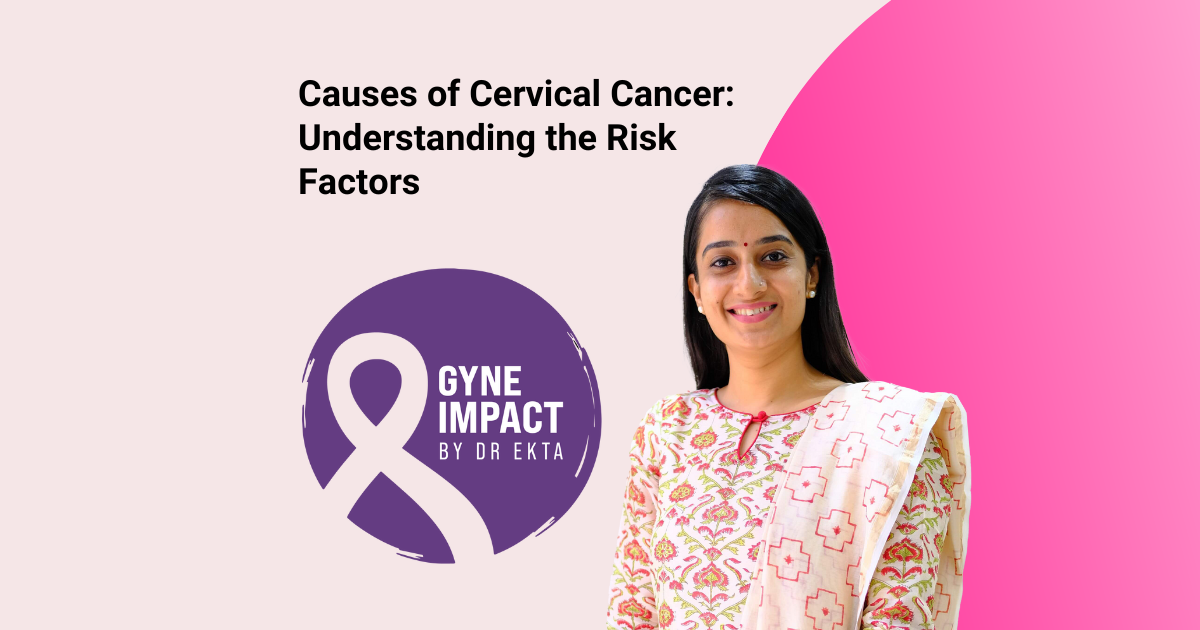As an oncologist, I have spent countless hours researching and treating various forms of cancer, including cervical cancer. Cervical cancer is a significant health concern worldwide, affecting millions of women every year. Understanding the causes of cervical cancer is crucial in both preventing and treating this disease effectively. In this blog, I will delve into the primary causes of cervical cancer, shedding light on the risk factors that contribute to its development.
Causes of Cervical Cancer: The Role of Human Papillomavirus (HPV)
The most significant cause of cervical cancer is infection with the Human Papillomavirus (HPV). HPV is a group of more than 200 related viruses, some of which are sexually transmitted and can cause genital warts and cancer. In fact, HPV is responsible for nearly all cases of cervical cancer. High-risk HPV types, particularly HPV 16 and HPV 18, are most commonly associated with cervical cancer.
When a woman is infected with a high-risk HPV type, the virus can cause changes in the cervical cells, leading to precancerous lesions. If these lesions are not detected and treated early, they can progress to cervical cancer over time. Regular screening through Pap smears and HPV tests is essential for detecting these changes early and preventing the development of cervical cancer.
Other Causes of Cervical Cancer
While HPV infection is the primary cause of cervical cancer, other factors can also contribute to the disease’s development. Understanding these additional causes of cervical cancer can help in identifying women who may be at higher risk.
1. Smoking
Smoking is a well-known risk factor for many types of cancer, including cervical cancer. Women who smoke are twice as likely to develop cervical cancer as non-smokers. The harmful chemicals in tobacco smoke can damage the DNA of cervical cells, increasing the risk of developing cancer. Additionally, smoking weakens the immune system, making it harder for the body to fight off HPV infections.
2. Immunosuppression
Women with weakened immune systems are at a higher risk of developing cervical cancer. This includes women with HIV/AIDS, those taking immunosuppressive drugs, or those who have undergone organ transplants. A weakened immune system is less effective at clearing HPV infections, allowing the virus to persist and potentially cause cancerous changes in the cervical cells.
3. Long-term Use of Oral Contraceptives
Studies have shown that long-term use of oral contraceptives (birth control pills) can increase the risk of cervical cancer. The risk appears to be higher in women who have used oral contraceptives for five or more years. However, the risk decreases after discontinuing the use of these contraceptives. It is essential to discuss the risks and benefits of oral contraceptives with your healthcare provider, especially if you have other risk factors for cervical cancer.
4. Multiple Full-term Pregnancies
Women who have had three or more full-term pregnancies have an increased risk of developing cervical cancer. The reasons for this increased risk are not entirely understood, but it is thought that hormonal changes during pregnancy, as well as the immune system’s adaptations, may make the cervix more susceptible to HPV infection and cancerous changes.
5. Early Age at First Full-term Pregnancy
Having a full-term pregnancy before the age of 17 significantly increases the risk of cervical cancer. The cervix of younger women is more susceptible to the effects of HPV, and early childbearing can increase the likelihood of persistent HPV infections and subsequent cervical cancer development.
6. Socioeconomic Factors
Women of lower socioeconomic status are at a higher risk of developing cervical cancer. This increased risk is often due to limited access to healthcare services, including regular screening and vaccination against HPV. Education and awareness programs are essential to ensure that all women, regardless of socioeconomic status, have access to preventive measures and early detection.
7. Family History
A family history of cervical cancer can also increase a woman’s risk of developing the disease. Genetic factors may play a role, and women with a close relative (mother, sister) who has had cervical cancer are at a higher risk. It is important for these women to inform their healthcare providers about their family history and undergo regular screening.
Prevention and Early Detection
Understanding the causes of cervical cancer is the first step in prevention and early detection. Here are some key strategies to reduce the risk of developing cervical cancer:
1. HPV Vaccination
The HPV vaccine is highly effective in preventing infection with the high-risk HPV types that cause most cervical cancers. It is recommended for preteens (both boys and girls) at age 11 or 12, but it can be given as early as age 9 and up to age 45. Vaccination before becoming sexually active offers the best protection.
2. Regular Screening
Regular screening with Pap smears and HPV tests is essential for detecting precancerous changes in the cervix. Women should begin screening at age 21 and continue as recommended by their healthcare provider. Early detection and treatment of precancerous lesions can prevent the progression to cervical cancer.
3. Safe Sexual Practices
Since HPV is sexually transmitted, practicing safe sex can reduce the risk of infection. Using condoms and limiting the number of sexual partners can help lower the risk of HPV transmission.
4. Smoking Cessation
Quitting smoking can significantly reduce the risk of cervical cancer. There are various resources available to help women quit smoking, including counseling, medications, and support groups.
5. Maintaining a Healthy Immune System
A healthy immune system is crucial for fighting off HPV infections. Women should adopt a healthy lifestyle, including a balanced diet, regular exercise, and stress management. For women with conditions that weaken the immune system, regular monitoring and early intervention are important.
Conclusion
As an oncologist, my goal is to empower women with knowledge about the causes of cervical cancer and the steps they can take to reduce their risk. HPV infection remains the most significant cause of cervical cancer, but other factors, such as smoking, immunosuppression, and reproductive history, also play a role. By understanding these causes and adopting preventive measures, women can significantly reduce their risk of developing cervical cancer.
Regular screening, HPV vaccination, and healthy lifestyle choices are key components in the fight against cervical cancer. It is essential for women to have open and informed discussions with their healthcare providers about their individual risk factors and the best strategies for prevention and early detection.
By staying informed and proactive, we can work together to reduce the incidence of cervical cancer and improve the health and well-being of women worldwide.

